This article was co-authored by Chris M. Matsko, MD. Dr. Chris M. Matsko is a retired physician based in Pittsburgh, Pennsylvania. With over 25 years of medical research experience, Dr. Matsko was awarded the Pittsburgh Cornell University Leadership Award for Excellence. He holds a BS in Nutritional Science from Cornell University and an MD from the Temple University School of Medicine in 2007. Dr. Matsko earned a Research Writing Certification from the American Medical Writers Association (AMWA) in 2016 and a Medical Writing & Editing Certification from the University of Chicago in 2017.
There are 14 references cited in this article, which can be found at the bottom of the page.
wikiHow marks an article as reader-approved once it receives enough positive feedback. In this case, 95% of readers who voted found the article helpful, earning it our reader-approved status.
This article has been viewed 212,099 times.
Carvedilol is the generic name for the drug Coreg. Carvedilol is a type of beta-blocker that is used to treat high blood pressure, prevent a condition known as congestive heart failure from getting worse, and is used to treat a condition called left ventricular dysfunction in people who have had a heart attack. As with any drug, side effects are possible. Take steps to minimize problems you may be experiencing from the use of carvedilol.
Steps
Recognizing the Benefits and Side Effects
-
1Identify why you have been prescribed carvedilol. People that are prescribed carvedilol fall into three main groups. They include people that have high blood pressure, a condition called congestive heart failure, or have had a heart attack in the past that left them with problems with the way the left ventricle of their heart functions.[1]
- Carvedilol is a nonselective beta-blocker that also has alpha-adrenergic blocking activity. That means that carvedilol helps to reduce the work that your heart needs to do.
- In general, carvedilol relaxes the blood vessels and slows down the rhythmic beats of your heart. This allows for your blood to carry enough oxygen to and from your heart to allow it function and continue to provide enough blood flow to keep your other organs healthy, even if your heart has problems.
- By relaxing the blood vessels and slowing down your heart rate, your blood flow improves and your blood pressure is reduced.
- Beta-blockers as a class are used in the treatment of other conditions. Some of these include angina, arrhythmias, helping your heart to beat when the walls of the heart muscle are too thick (hypertrophic cardiomyopathy), other heart conditions that prevent the heart from either filling or emptying efficiently, migraine headaches, glaucoma, tremors, and even some types of anxiety.
-
2Discover how carvedilol is helping you. When nonselective beta-blockers, including carvedilol, are prescribed for specific medical conditions, it is not possible to tell the drug which receptors to block and which ones to ignore. This means that you get the benefit of the drug, but you also get some side effects based on how the drug does its job.[2]
- Naturally occurring chemicals called catecholamines are found everywhere in your body, including the tissues of your heart muscle.
- When catecholamines bind to their receptors normally, they cause natural increases in heart rate, contractions of the heart muscle, increases in blood pressure, and relaxation of areas in your lungs and airways that help your lungs to expand when you are exercising.
- Beta-blockers work by preventing the catecholamines from binding to their receptors. This is why your heart rate is slowed, the beating of your heart can be managed, and your blood pressure can be dropped.
- Because of the way beta-blockers do their job, sometimes unwanted effects come along with the benefits.
Advertisement -
3Recognize the serious side effects. Since the receptors that are acted on by beta-blockers are located throughout your body, the list of possible serious side effects is quite lengthy. Any reaction that you feel is a sudden and serious change warrants medical attention, even if it is not found in this list. Some of the most serious side effects that require prompt or emergency medical attention include the following:[3]
- Sudden weight gain, swelling, numbness, and tingling in the hands, feet, legs, or ankles, or a weakness or heaviness in the legs
- Pain, stiffness, or swelling in your joints, including pain in your great toe, and body pain in your arm, back, jaw, side, or stomach, muscle pain or cramping, and a sudden or severe headache
- Changes in your kidney and bowel function that include bloody, black, or tarry stools, cloudy or dark urine, blood in your urine, increased urination, or a decrease in the frequency or amount of urine
- Confusion, loss of consciousness, depression, loss of the ability to speak, slurred speech, loss of vision, nervousness, shakiness, seizures, or changes in sleep patterns including nightmares
- Cool or cold skin, sweats, flushed or dry skin, sudden weakness of the body on only one side, unusual bleeding or bruising, yellow tint to the eyes or skin, or dizziness or faintness when getting up suddenly
- Flu-like symptoms, chills, fever, cough, loss or change in appetite, noisy breathing, fruit-like odor to the breath, trouble breathing even at rest, pounding sound in the ears, a pounding and slowed heart rate, a sudden change in pulse or blood pressure, and rapid breathing
-
4Call 911 or emergency services if you have signs of an allergic reaction. Any time you develop symptoms that are consistent with those of an allergic reaction, seek immediate medical attention.[4]
- Watch for signs of an allergic reaction if you are just beginning carvedilol, have recently switched brands, or have recently changed from the regular tablets to an extended release product.
- Symptoms of an allergic reaction include difficulty breathing, shortness of breath, swelling of your facial area including your lips and tongue, difficulty swallowing or a feeling that your throat is swollen or closing, feeling dizzy or faint, a new rash or hives anywhere on your body, slowing of your heart rate to less than 50 beats per minute, swelling in your legs, ankles, or feet, and a feeling of coldness in your hands or feet.
-
5Recognize the common side effects. Some side effects occur that do not need immediate medical attention and may improve as your body adjusts to the medication or to a recent change in dose. Any side effect that is persistent or disruptive to your daily routines warrants medical attention. Some side effects that occur more commonly include the following:[5]
- Unusual fatigue or weakness, joint and muscle pain, loss of strength, poor energy levels, sleepiness or unusual drowsiness, or a general feeling of discomfort or illness
- Diarrhea, abdominal discomfort, nausea, vomiting, or stomach pain
- Back pain, difficulty moving, joint pain, or muscle pain
- Decreased interest in sexual activity and difficulty having or keeping an erection
- Feeling dizzy, a sensation of spinning, or a feeling of constant movement of your body or the surroundings
- Changes in vision, blurred vision, headache, persistent breath odor or bad taste in your mouth, changes in your gum tissue, sore throat, or stuffy or runny nose
-
6Consider your other medications. Carvedilol may not be the only medication you are taking that is causing you to feel tired.[6]
- Try to limit your daytime use of medications that you take for pain that are prescribed “as needed.”
- Take the medication when you need it of course, but realize that prescription strength pain medications can also cause fatigue.
- Prescription strength pain medications that are prescribed on a scheduled basis can possibly be dose adjusted to still provide for your pain management needs, but at a lower daytime dose.
- Work with your doctor to reach a dose that is high enough to provide the relief you need, but lower than what you currently take since you are having trouble with feeling tired during the day.
- Medications other than pain medications also cause fatigue and tiredness. Review all your medications with your doctor, or a trained pharmacologist, to look at the way your meds are influencing your functioning and how they may be influencing each other.
- There are usually options in adjusting prescribed medication regimens to reduce problems with fatigue and other persistent side effects.
Managing the Side Effects
-
1Address the fatigue. There is nothing you can do to stop the drug from causing the fatigue but there are things you can do make it less of a problem.
- Take small sips of a caffeinated beverage, such as coffee or tea, throughout the day. Be sure this is ok with your doctor and will not cause problems for your medical condition.
- Ask your doctor if you can try adjusting your medication times and doses. You clearly need to be on carvedilol, but it may be possible to take a smaller dose in the morning and a higher dose at bedtime to help with daytime fatigue.
- Never stop or adjust your medication without talking to your doctor first. The safe use of the medication is the most important factor.
-
2Get enough rest. Since carvedilol is likely to make you feel fatigued and low on energy, be sure you are getting enough rest so your own sleep needs are not contributing to the side effects of the medication.[7]
- The amount of sleep people need varies from person to person. Take additional steps to determine your sleep needs and adjust your schedule accordingly.
- Keep a regular and scheduled bedtime and a regular time to get up each morning.
- Take that extra nap, take a break, or just sit down when you need to. Consider scheduling a mid-afternoon short nap, and don’t feel guilty about it. Napping gives you renewed energy and a fresh outlook when you wake up.
- Realize that the medication is making you feel fatigued and low on energy and don’t just try to fight your way past it. Give your body the rest it needs as you adjust to your medication.
-
3Deal with the stomach problems. Most people that experience stomach problems feel it to be a lingering feeling of nausea and related symptoms that lasts for several hours each day.[8]
- Try sipping on ginger ale or other carbonated beverage during the times you feel nauseous. Don’t wait until it starts if you know it happens every day at the same general time.
- Eat a few saltine crackers with the ginger ale.
- Have your beverage over ice chips, and continue to suck on those ice chips once your beverage is gone.
- Try to determine if the nausea is more of a problem when you have eaten, or when your stomach is empty. Consider smaller meals throughout the day, instead of the typical three meals a day schedule, to help settle your stomach.
- Eating smaller meals more frequently can also control the amount of food your stomach is digesting and decrease the intensity of stomach cramps and diarrhea.
- Avoid eating spicy foods or any foods that you identify as triggers for the abdominal cramping and diarrhea.
-
4Ask your doctor about medications for erectile dysfunction. It is possible that your doctor will not advise you to resume sexual activity, but if she approves and you are experiencing ED, she may be able to prescribe a medication to treat this side effect.[9]
- Drugs that fall in the category of agents that treat erectile dysfunction are safe for use with carvedilol, provided your doctor agrees. There are, however, potential drug interactions, which may cause hypotension, or low blood pressure.[10]
- Sildenafil and tadalafil are two commonly used drugs to treat erectile dysfunction.[11] Agents like these may help to reduce any problems you may be having with sexual function as a result of taking carvedilol. Because of the risk of hypotension, you will need to take these drugs under strict supervision if your doctor prescribes them.
-
5Address the joint and muscle pain problems. As with everything, talk to your doctor before you make changes in your routine or medications that may help to minimize the joint and muscle pain and stiffness.[12]
- Consider stretching exercises or yoga classes.
- Take a warm or hot shower each morning to reduce the muscle and joint pain and stiffness.
- Apply heat throughout the day to areas that are particular troublesome.
- Ask your doctor about taking anti-inflammatory agents or mild muscle relaxers for the joint and muscle pain and stiffness. Some over-the-counter agents may interfere with how well the carvedilol works, so you doctor may want to carefully monitor the dose of both drugs.
- Some muscle relaxer agents can also cause fatigue so use with caution if your doctor agrees.
-
6Talk to your doctor about visual changes. This is an area that may require the help of your doctor in pursuing adjustment of your glasses or other visual aids.[13]
- Be sure you have reached your target dose before you make an appointment with your eye doctor to consider adjusting your glasses or contacts accordingly.
- Adjusting your eyeglasses or contacts may help with the feeling of dizziness.
- If you continue to have trouble with dizziness or a spinning sensation, consider an early morning exercise and stretching routine that improves your circulation to help reduce those side effects.
- Low-dose prescription medications can also be tried, such as meclizine, but they may add to the fatigue in some cases.
Making Lifestyle Changes
-
1Try not to be discouraged. Many people experience weight gain, muscle weakness, fatigue, and low energy levels, along with many other of the side effects previously listed, and feel the medication is making it difficult to maintain their quality of life. This makes it especially challenging to consider making changes in your life when you have less energy than before, and the situation feels beyond your control.[14]
- Making some changes in your normal routines can help to offset some of the side effects and give you back some of the control you may feel has been lost.
- Keep in mind that adjusting things within your control to address some of the side effects may also be strengthening your heart and helping to lower your blood pressure.
- By taking steps to strengthen your heart and lower your blood pressure, you may reach a point where the dose of medication can be substantially reduced.
-
2Adjust your diet. Now is the time to make changes in your diet if you have not already done so. Eat a diet that can help enhance the treatment of your condition, give your body the nutrients in needs, and limit unnecessary calories.[15]
- Include a variety of fruits and vegetables, especially dark and leafy vegetables. Incorporate whole grains, low-fat dairy products, skinless poultry and fish, nuts and legumes, and non-tropical vegetable oils.
- If you choose to eat red meat occasionally, select cuts of meat that are lean.
- Try to cut back on your use of salt and avoid using salt during food preparation. Limit your daily intake of sodium to no more than 2400mg each day. Set a goal of reaching 1500mg per day. Even a reduction from your usual intake if it exceeds these limits is a step in the right direction.
- Avoid sugary foods and beverages that contain sugar.
- Talk to the grocery shopper and chef in your household if it is someone other than yourself. Stress the importance of selecting and preparing foods that are in the best interest of your cardiac health.
- Eat reasonable portions sizes especially when you are dining out.
- Limit your alcohol intake to one drink per day for a female and no more than two drinks per day for a male. Avoid drinking alcohol within two hours of taking your carvedilol dose. Alcohol can interfere with the way the drug is absorbed and can contribute to unwanted side effects.
- Quit smoking and avoid secondhand smoke.
-
3Start a safe exercise program. Many people suffer the fatigue and muscle weakness associated with carvedilol and struggle with physical activity. Even so, your effort at increasing your level of physical activity can pay off in many ways. One of which is helping to manage the weight gain related to carvedilol and another is the possibility of improving your cardiac health so you may reach a point where you can reduce your dosage.[16]
- Always discuss your exercise plans with your doctor. It may be best to begin in a monitored environment such as a cardiac rehab program or with the help of a physical therapist.
- One key point as you start your exercise program is to keep track of your daily intake of calories so you can be sure you are burning those calories in order to prevent weight gain.
- Carvedilol prevents your heart rate from rising too far and too quickly. Do not expect to use your pulse rate as a method of measuring the intensity of your workout.
- With the help of your doctor, determine how much exercise you should plan for, how many times a week and for how long each time, the types of exercises you should do, the ones you should avoid. Also develop a plan for timing your medications around your exercise routine.
-
4Exercise safely. Limit your outdoor exposure if it is too hot, too cold, or too humid, stay well hydrated during your workout, and always ease into your routine. If you have been sick or away from your workout routine for a period of time, take care to start again gradually and slowly.[17]
- If you have trouble once you have started, then stop until the problem is resolved.
- Examples of situations that may warrant stopping include excessive fatigue, shortness of breath, irregular heart rate, and unusual pain anywhere, but especially chest pain.
- Stop your workout if you notice a sudden change in your heart rate, develop irregular heartbeats, or palpitations.
- If you experience unexpected pain, especially chest pain, stop and call your doctor or call 911. Call your doctor or seek urgent medical care if you feel pressure in your chest, or radiating pressure or pain into your arm, neck area, jaw, or shoulder.
- If you feel dizzy, faint, lightheaded, or if you pass out, call your doctor or seek urgent medical attention.
Complying with Your Prescribed Treatment
-
1Stay with your treatment plan. Don’t stop your medication. Talk to your doctor and let him or her know about persistent side effects. Discuss ways to manage them and still get the benefit you need from the medication. Sometimes, doses can be adjusted, timing can be altered, different medications can be tried, or you can be switched to or from a longer acting product that can help reduce your side effects.[18]
- You are the most important member of your healthcare team. Take an active role in monitoring your condition. This may lead to a lower dose if your condition is stable or improves.
- Take the medication properly. Take your dose(s) at the same time every day. Twice daily dosing is best at eight to ten hour intervals.
- Carvedilol is best absorbed if taken with food. By taking with food consistently, your body gets more from each dose and may lead to a good response that can allow you to talk to your doctor about trying a lower dose.
- Do not crush, open or break the tablets or capsules. Especially if you have the controlled release form of the medication.
- Some dosage forms allow for crushing or opening the capsule for people that have a difficult time swallowing. The crushed tablet or contents of the capsule can be spread on a small amount of applesauce or other food easy to swallow. Do not do this without making sure the tablets or capsules prescribed for you are safe to be crushed or opened.
- If you are allowed to break your tablets for dosing reasons, do not break more than what you immediately need. Many drugs lose their strength when exposed to air. Only open or break what you need for that dose, or that day’s doses.
-
2Take your blood pressure at home. Several types of home devices are available to measure your blood pressure at home. Be sure you select a device your doctor agrees with since there are many different types of products available.[19] Take it with you to the next appointment to have it calibrated.
- This means that you, the nurse, or doctor, will take your blood pressure with your new machine and also with their equipment in the office to be sure the readings are the same, or at least close.
- Select a cuff that is appropriate for the size of your arm and choose a device that has large numbers and a display that is easy to read.
- Talk to your doctor to identify which arm he or she wants you to use to take your pressure. There is a slight difference in your blood pressure readings from your left and right arm, and this may be important depending on your diagnosis.
- Take your readings at the same general time each day, and take multiple readings each time. Wait about one to two minutes between readings. Remove the cuff between the readings.
- Sit with your back straight and supported like in a solid dining table chair rather than the sofa. Make sure both feet are flat on the floor and don’t cross your legs. Make sure your arm rests comfortably on a table.
-
3Keep a log of your blood pressure and pulse rate. Avoid relying on your memory. Keep a journal or log with your device and record every reading. Take this with you to each appointment.
- Write your doctor’s phone number in your journal or log. Clearly indicate in your log the blood pressure numbers that he or she wants to know about immediately. Also write down your doctor’s guides for your pulse rate that he or she considers normal for you, and when you need to call your doctor based on your pulse rate.
- Notify your doctor if you get a high reading. Be sure you know in advance what your doctor considers “high” for you.
- In most cases, systolic readings greater than 180, which is the first and higher number, or diastolic readings greater than 110 are considered a medical emergency.
- Check your pulse at the same time. Most devices that monitor your blood pressure will also give you a pulse reading. Follow your doctor’s instructions on when to notify him or her for either high, low, or irregular pulse rates.
- Use your journal to record activities you participated in and anything unusual in your diet that can help to identify triggers that cause your condition or the side effects to be more prominent.
Seeking Medical Advice
-
1Know when emergency medical care is warranted. Call 911 if you experience signs of heart problems, chest pain, tightness or pressure, or pain that spreads to your jaw, neck or arm. Other serious signs include unusual sweating, feeling dizzy or lightheaded, fainting, difficulty breathing, and fast or irregular heartbeat.[20]
- Talk to your doctor about any changes in your primary symptoms. Keep a written list of serious symptoms specific to your condition that warrant immediate care.
- Keep a copy of that list with you. Be prepared in case you are not able to take charge of calling 911 or getting yourself to the hospital.
-
2Talk to your doctor about persistent side effects. Your doctor may be able to help address problems that are making it difficult for you to function on a day-to-day basis.[21]
- Always let your doctor know if other healthcare providers adjust any of your medications. Carvedilol and other similar drugs have literally hundreds of possible drug interactions.[22]
- Some interactions can cause the effects of carvedilol to be even stronger and some can mean that your doctor may need to increase your dose a little. This all depends on the other drug that was added and how long you will need to take it.
- Always let your doctor know of all prescription medications you take, as well as all over-the-counter products, vitamins, and herbal supplements. Do not change anything about your regular medication routine without consulting your doctor.
-
3Monitor for changes. If your doctor needs to adjust your dose of carvedilol for any reason, be sure you follow up by monitoring your symptoms closely and advising your doctor if you have any problems.[23]
- Even switching from one generic brand of carvedilol to another can result in some variance in how your body absorbs the new version.
- Plus, your body may need some help adjusting if you switched to or from any extended release product of carvedilol.
- Do not overlook any unusual symptoms or exaggeration of side effects. Let your doctor know if you have any problems.
-
4Talk to your doctor about other medical conditions. There are some disease states that carvedilol should not be used in, and some that require caution.[24]
- Carvedilol should not be used in people with asthma or related lung disorders, severe problems with liver function, and in some people that have a tendency to develop severe allergic reactions.
- Examples of medical conditions where the use of carvedilol should be closely monitored includes diabetes, kidney function problems, peripheral vascular disease, and some types of thyroid disorders.
- Always let your doctor know if another healthcare provider suspects or diagnoses another medical condition.
Expert Q&A
-
QuestionI've started getting heart palpitations. What should I do?
 Chris M. Matsko, MDDr. Chris M. Matsko is a retired physician based in Pittsburgh, Pennsylvania. With over 25 years of medical research experience, Dr. Matsko was awarded the Pittsburgh Cornell University Leadership Award for Excellence. He holds a BS in Nutritional Science from Cornell University and an MD from the Temple University School of Medicine in 2007. Dr. Matsko earned a Research Writing Certification from the American Medical Writers Association (AMWA) in 2016 and a Medical Writing & Editing Certification from the University of Chicago in 2017.
Chris M. Matsko, MDDr. Chris M. Matsko is a retired physician based in Pittsburgh, Pennsylvania. With over 25 years of medical research experience, Dr. Matsko was awarded the Pittsburgh Cornell University Leadership Award for Excellence. He holds a BS in Nutritional Science from Cornell University and an MD from the Temple University School of Medicine in 2007. Dr. Matsko earned a Research Writing Certification from the American Medical Writers Association (AMWA) in 2016 and a Medical Writing & Editing Certification from the University of Chicago in 2017.
Family Medicine Physician You should talk to you doctor. Maybe you need to be switched to something like diltiazem or metoprolol.
You should talk to you doctor. Maybe you need to be switched to something like diltiazem or metoprolol. -
QuestionHow do I cope with insomnia caused by Carvedilol?
 Chris M. Matsko, MDDr. Chris M. Matsko is a retired physician based in Pittsburgh, Pennsylvania. With over 25 years of medical research experience, Dr. Matsko was awarded the Pittsburgh Cornell University Leadership Award for Excellence. He holds a BS in Nutritional Science from Cornell University and an MD from the Temple University School of Medicine in 2007. Dr. Matsko earned a Research Writing Certification from the American Medical Writers Association (AMWA) in 2016 and a Medical Writing & Editing Certification from the University of Chicago in 2017.
Chris M. Matsko, MDDr. Chris M. Matsko is a retired physician based in Pittsburgh, Pennsylvania. With over 25 years of medical research experience, Dr. Matsko was awarded the Pittsburgh Cornell University Leadership Award for Excellence. He holds a BS in Nutritional Science from Cornell University and an MD from the Temple University School of Medicine in 2007. Dr. Matsko earned a Research Writing Certification from the American Medical Writers Association (AMWA) in 2016 and a Medical Writing & Editing Certification from the University of Chicago in 2017.
Family Medicine Physician Fatigue is a major side effect of coreg. The best way to cope is to eat a healthy diet, exercise, and talk with your doctor.
Fatigue is a major side effect of coreg. The best way to cope is to eat a healthy diet, exercise, and talk with your doctor.
Warnings
- Carvedilol can interact with many other drugs or aggravate existing conditions. It is essential that you discuss your medical history with your doctor and disclose any and all other medications — including vitamins and supplements — you may be taking.⧼thumbs_response⧽
- Never change your dosage or abruptly stop taking your medication. Speak with your doctor first.⧼thumbs_response⧽
References
- ↑ http://www.mayoclinic.org/drugs-supplements/carvedilol-oral-route/description/drg-20067565?p=1
- ↑ http://circ.ahajournals.org/content/107/18/e117.full.pdf+html
- ↑ https://fadavispt.mhmedical.com/content.aspx?bookid=1873§ionid=139004301
- ↑ https://www.drugs.com/sfx/carvedilol-side-effects.html
- ↑ http://www.mayoclinic.org/drugs-supplements/carvedilol-oral-route/description/drg-20067565?p=1
- ↑ https://www.mayoclinic.org/drugs-supplements/carvedilol-oral-route/description/drg-20067565?p=1
- ↑ https://www.drugs.com/drug-class/non-cardioselective-beta-blockers.html
- ↑ https://www.pharmacytimes.com/view/2008-08-8642
- ↑ http://circ.ahajournals.org/content/107/18/e117.full.pdf+html
- ↑ http://www.ncbi.nlm.nih.gov/pubmed/17011375
- ↑ http://circ.ahajournals.org/content/107/18/e117.full.pdf+html
- ↑ https://fadavispt.mhmedical.com/content.aspx?bookid=1873§ionid=139004301
- ↑ https://www.drugs.com/drug-class/non-cardioselective-beta-blockers.html
- ↑ http://www.heart.org/HEARTORG/GettingHealthy/NutritionCenter/HealthyEating/The-American-Heart-Associations-Diet-and-Lifestyle-Recommendations_UCM_305855_Article.jsp
- ↑ http://www.heart.org/HEARTORG/Conditions/HighBloodPressure/PreventionTreatmentofHighBloodPressure/Managing-Blood-Pressure-with-a-Heart-Healthy-Diet_UCM_301879_Article.jsp
- ↑ https://www.hopkinsmedicine.org/health/wellness-and-prevention/3-kinds-of-exercise-that-boost-heart-health
- ↑ https://www.heart.org/en/health-topics/consumer-healthcare/medication-information/how-do-beta-blocker-drugs-affect-exercise
- ↑ http://circ.ahajournals.org/content/107/18/e117.full.pdf+html
- ↑ https://www.health.harvard.edu/heart-health/tips-to-measure-your-blood-pressure-correctly
- ↑ http://www.heart.org/HEARTORG/GettingHealthy/NutritionCenter/HealthyEating/The-American-Heart-Associations-Diet-and-Lifestyle-Recommendations_UCM_305855_Article.jsp
- ↑ http://www.mayoclinic.org/drugs-supplements/carvedilol-oral-route/description/drg-20067565?p=1
- ↑ https://www.drugs.com/drug-class/non-cardioselective-beta-blockers.html
- ↑ https://www.singlecare.com/blog/carvedilol-side-effects/
- ↑ https://www.singlecare.com/blog/carvedilol-side-effects/
About This Article
To cope with the side effects of Coreg, also known by its generic name carvedilol, start by talking to your doctor about adjusting your dosage. You can sip on caffeinated beverages throughout the day to fight the fatigue you may be feeling, which is a common side effect. If the medication is making you feel nauseous, drink ginger ale and munch on saltines. Simple stretching exercises may help with the muscle pain and joint stiffness. Coreg is also known to cause erectile dysfunction, so if you're experiencing this, it's completely normal. Talk to your doctor about medications, like sildenafil and tadalafil, that can help you manage sexual side effects. For tips from our medical co-author about handling vision changes, read on!
-Step-1-Version-2.webp)
-Step-2-Version-2.webp)
-Step-3-Version-2.webp)
-Step-4-Version-2.webp)
-Step-5-Version-2.webp)
-Step-6.webp)
-Step-7.webp)
-Step-8.webp)
-Step-9.webp)
-Step-10.webp)
-Step-11.webp)
-Step-12.webp)
-Step-13.webp)
-Step-14.webp)
-Step-15.webp)
-Step-16.webp)
-Step-17.webp)
-Step-18.webp)
-Step-19.webp)
-Step-20.webp)
-Step-21.webp)
-Step-22.webp)
-Step-23.webp)


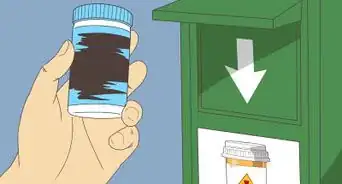
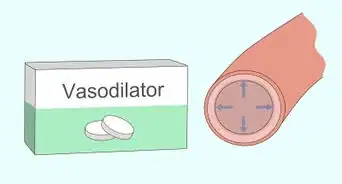





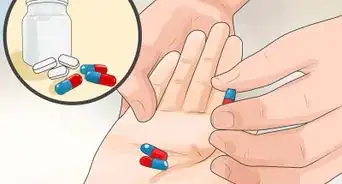


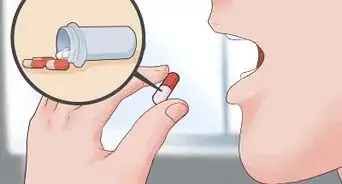













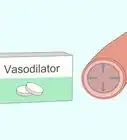



































Medical Disclaimer
The content of this article is not intended to be a substitute for professional medical advice, examination, diagnosis, or treatment. You should always contact your doctor or other qualified healthcare professional before starting, changing, or stopping any kind of health treatment.
Read More...